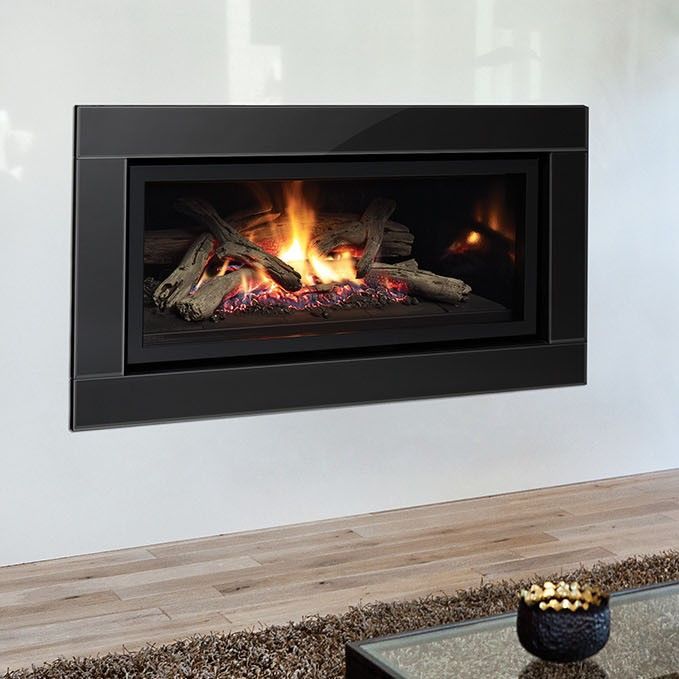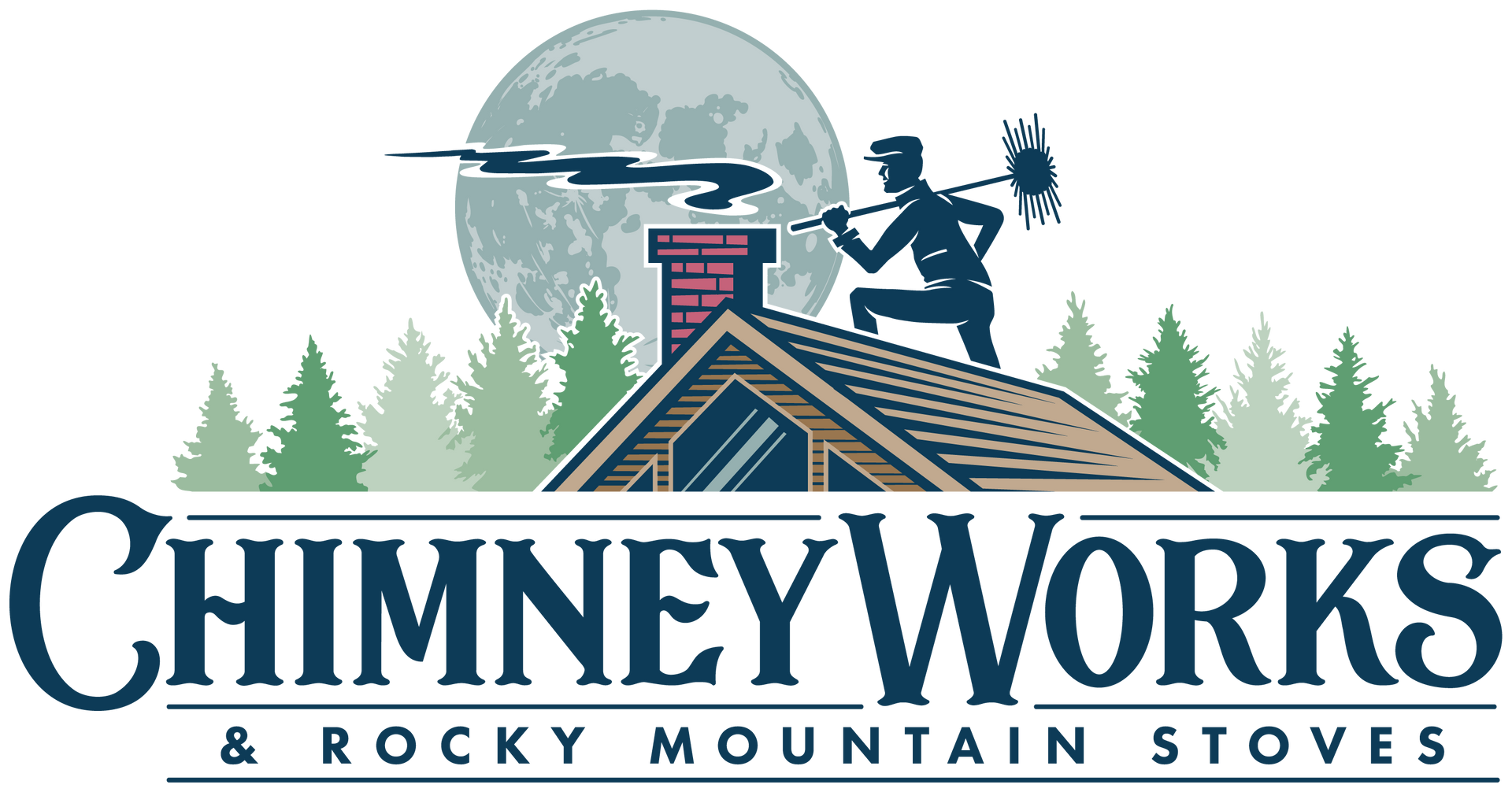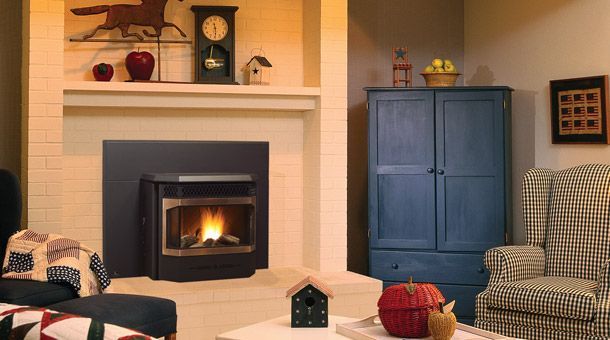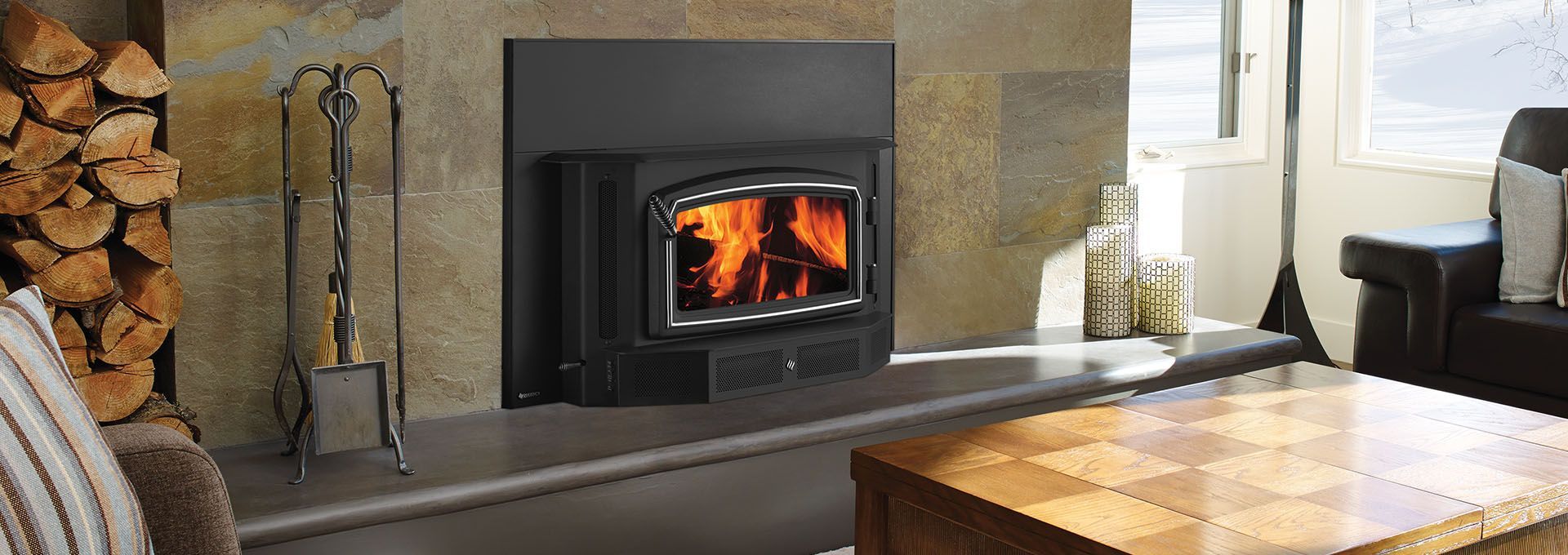Buyer’s Guide: Gas And Electric Fireplaces

Wait! What? Are Fireplaces really different than Fireplace Inserts ? It’s confusing, but yes. In this context, we are talking specifically about Gas Fireplaces or Electric Fireplaces. A Gas or Electric Fireplace refers to a factory-built, fully enclosed heating appliance that can be installed without an existing masonry chimney or flue. A fireplace insert is manufactured to go directly into an open masonry fireplace, and it uses the existing chimney by being ‘inserted’ into the opening of the masonry fireplace.
Whether you are remodeling a room or doing new construction, you may want to consider purchasing and installing a fireplace. Due to relatively recent advancements in the manufacturing process, you do not even need a traditional masonry chimney to install a fireplace. The magic is in what the industry calls zero clearance. Zero clearance means that even the hot parts of the stove can be placed almost directly against combustible surfaces such as wood. So where does the hot exhaust go? It goes out what is called a direct vent, which can be run right through the side of your home. Not all fireplaces are direct vent, but many of the popular ones are. There are some fireplaces that require a “B-Vent” which must go through your roof, but still do not require a traditional chimney.
Types Of Factory-Built Fireplaces
Wood stoves get too hot to use direct vent technology, so when we are talking Fireplaces, we are talking about two options: Direct Vent Gas Fireplaces, or Electric Fireplaces.
If you are thinking “Yeah, but those aren’t REAL fireplaces…”, think again. Many of these fireplaces are capable of very high BTU output and the flames they produce look like real wood-fired flames.
Gas Fireplaces
Gas fireplaces burn natural gas, or if a conversion kit is available they can also burn propane. Gas fireplaces come with ceramic gas log sets, which mimic logs on the fire. The ceramic logs produce radiant heat as the flames from the gas warm them up. Many of the pros and cons of the actual firebox are exactly the same as Gas Inserts , so here we will focus on the pros and cons of as Gas Fireplace as a whole.
Pros
- With direct vent models, A gas fireplace does not require an existing masonry chimney
- Zero clearance models allow the fireplace to be placed very close (sometimes within 1/2 inch) to combustible materials like wood framing
- Many models are capable of high temperatures for heating large spaces
Cons
- Gas Fireplaces, while not requiring much space, generall require the construction of what is called a chase or a bump-out, which is basically a faux fireplace to hold the gas fireplace unit
- Despite the zero clearance name, you can’t put a gas fireplace any old place, manufacturers do have some clearance requirements, such as directly above the fireplace
- For very large models, such as those 100 inches are longer, they can get very, very expensive
Electric Fireplaces
Electric Fireplaces use, you guessed it, electric to generate heat. They use light and reflectors to approximate the look of a flame. Before you dismiss electric fireplaces because they are “fake flames”, let me state that they have come a long way in the last few years. There are now electric fireplaces that use special lighting and water vapor that very closely mimic real wood flames. Different manufacturers have different options and effects that can make flames, lighting, bed and background colors change. Some even make popping and crackling sounds just as though they were real flames burning wood. These often can be embedded right into a 2X4 or 2X6 wall, which means you’ll have minimum renovation work to do. Some are designed so they are visible from both sides so that you can see them from both sides of the wall they are embedded in. Some slim models can even be hung on the wall like a picture.
Pros
- Uses electric, so no gas, propane, wood pellets or firewood required
- Produces a good amount of heat, optionally even more, if you wire it up for 220v to double the heat output
- No combustion byproducts to worry about
- No venting required at all
- Even the large models are pretty reasonably priced
- Likey the least invasive install with respect to framing/construction
- When used for decoration only, Electric Fireplaces may cost as little as 3 cents per hour!
Cons
- Can’t help you when the power is out
- Still not a perfect replication of a real flame, but getting very close
- Running an electric fireplace for heat frequently will likely hit your electric bill pretty hard
Closing Thoughts
If you do not have an open masonry fireplace in your home, a direct vent gas fireplace or an electric fireplace may be right for you. Any construction or remodeling costs will definitely be less than building a chimney. The list of cons for both of these types of fireplaces is getting smaller every year.
.
The post Buyer’s Guide: Gas And Electric Fireplaces appeared first on Chimney Works & Rocky Mountain Stoves.
Search the Outpost






